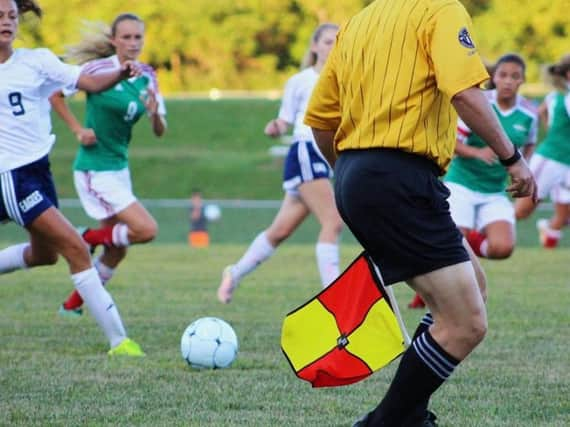FA should end its ban on men and women playing football together, says Sunderland University academic


Dr Paul Davis, a Senior Lecturer in the Sociology of Sport at the University, believes the ban is denying talented female footballers 'access to the highest competitive opportunities available'.
Men and women playing in the same team is currently banned amid safety concerns. It is also argued overturning the ban could impact on the growing popularity of the women’s game.


Advertisement
Hide AdAdvertisement
Hide AdBut in his paper ‘Challenging Sex Segregation: A Philosophical Evaluation of the Football Association’s Rules on Mixed Football’, Dr Davis says: "It is ‘generally’ true that in sports where features such as height, weight and body mass are heavily performance relevant, the best men will excel over the best women.
"This is at least partly because ‘generally’ men have an advantage over women in terms of their aerobic capacity, explosive and maximum strength and so forth. But this argument does not provide grounds for the FA’s complete ban."
And he argues that it is often differences in the height, strength and stamina of players which makes the game interesting, so there is no reason to exclude mixed teams – and in some cases female players can be “bigger and stronger” than their male counterparts.
"Body size is not of singular importance in football, demonstrated by the success of players such as Messi, Maradona, Shaun Wright-Philips and Jermaine Defoe," said Dr Davis
Advertisement
Hide AdAdvertisement
Hide Ad"Since most of the game is played on the ground, smaller players of agility, control, touch, awareness or speed can excel."
He says the FA is happy to ignore the physical risks which result from “physically mismatched” male players – lighter players are never likely to be separated from their heavier counterparts – only to go on and insist on the separation of the sexes as necessary to create safe competition: "The decision to enforce a ban which prevents women from competing with men because of an increased risk to players is inconsistent at best – women have the right, just as men do, to decide what risks of harm they will run," he said.
"The conclusion that removing the ban on mixed sex football would be detrimental to the women’s game is not supported by the evidence, which suggests a lot of female players are continuing to choose to play in women’s teams even when mixed football is available.
"Moreover, countries such as Norway and Sweden have maintained strong men’s and women’s football leagues, despite having no age restrictions on mixed football.”
Advertisement
Hide AdAdvertisement
Hide AdThe FA first imposed a blanket ban on mixed sex competitions in England in 1902. In 1991 the footballing body gave in to mounting pressure and allowed mixed competitive matches for children under the age of 11. In 2011 this age range was extended to under 13, marking the beginning of a series of incremental extensions from under 11 to under 16 in just four years.
"Isn’t it time the FA gives up its mantra that the safety of female players and the fairness of competition mean that women cannot compete with or against men?" said Dr Davis.